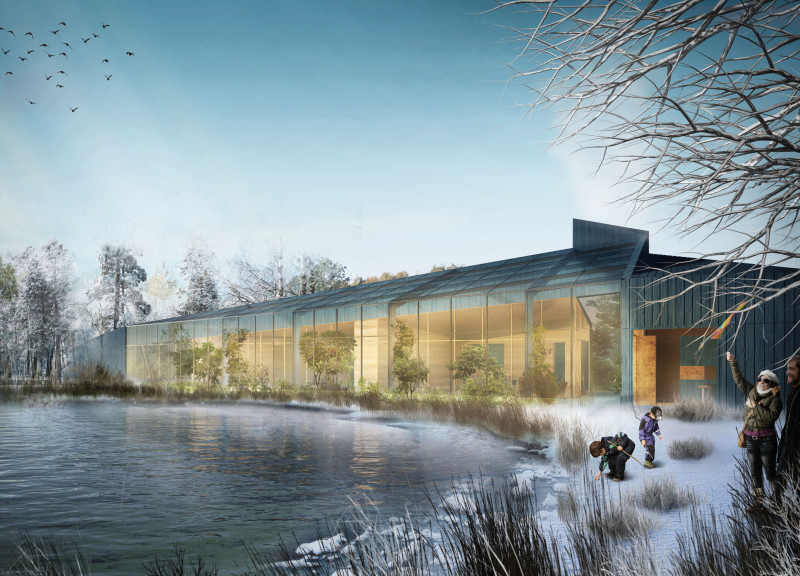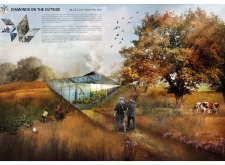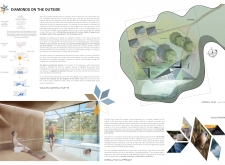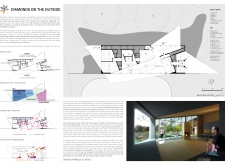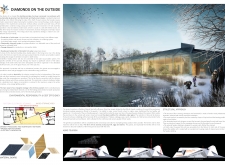5 key facts about this project
## Overview
The Blue Clay Country Spa, situated in Latvia along the Daugava River, is designed to integrate closely with the region's natural and cultural landscape. Inspired by the unique characteristics of Blue Clay, the spa aims to provide both functional wellness services and an immersive experience that reflects Latvia’s heritage. The design emphasizes a harmonious relationship between architecture and the surrounding environment, facilitating a dialogue that enhances the visitor's engagement with nature.
## Architectural Layout and Spatial Strategy
The project adopts a non-traditional layout, comprising three distinct yet interconnected components: The Hillock, which accommodates service areas; The Diamond, dedicated to guest lodging and spa facilities; and The Jewel Box, serving as the entry point and transitional space. This arrangement accommodates a fluid visitor experience, encouraging movement between indoor and outdoor environments. The design promotes relaxation and introspection in the spa areas while integrating therapeutic gardens and greenhouses to reinforce the connection to wellness principles inherent in nature.
## Material Selection and Sustainability
Material choices play a crucial role in the spa's architectural narrative. Local timber is utilized throughout the structure, providing warmth and facilitating spatial definition, while also aligning with sustainable sourcing practices. Extensive use of glass enhances transparency, allowing for natural light to permeate the interior and forging a connection with the exterior landscape. Additionally, Blue Clay serves both structural and aesthetic functions, highlighting local resources while contributing to energy efficiency. Brass accents provide subtle luxury, reflecting the natural tones of the environment.
Sustainability is further embedded in the design through innovative systems for water heating, wastewater treatment, and energy generation. Hydro-accumulative systems and a sophisticated chimney design not only enhance the building's efficiency but also illustrate a commitment to responsible resource management and ecological preservation. These elements collectively establish a model for contemporary eco-friendly architecture while prioritizing user experience and sensory engagement throughout the facility.


